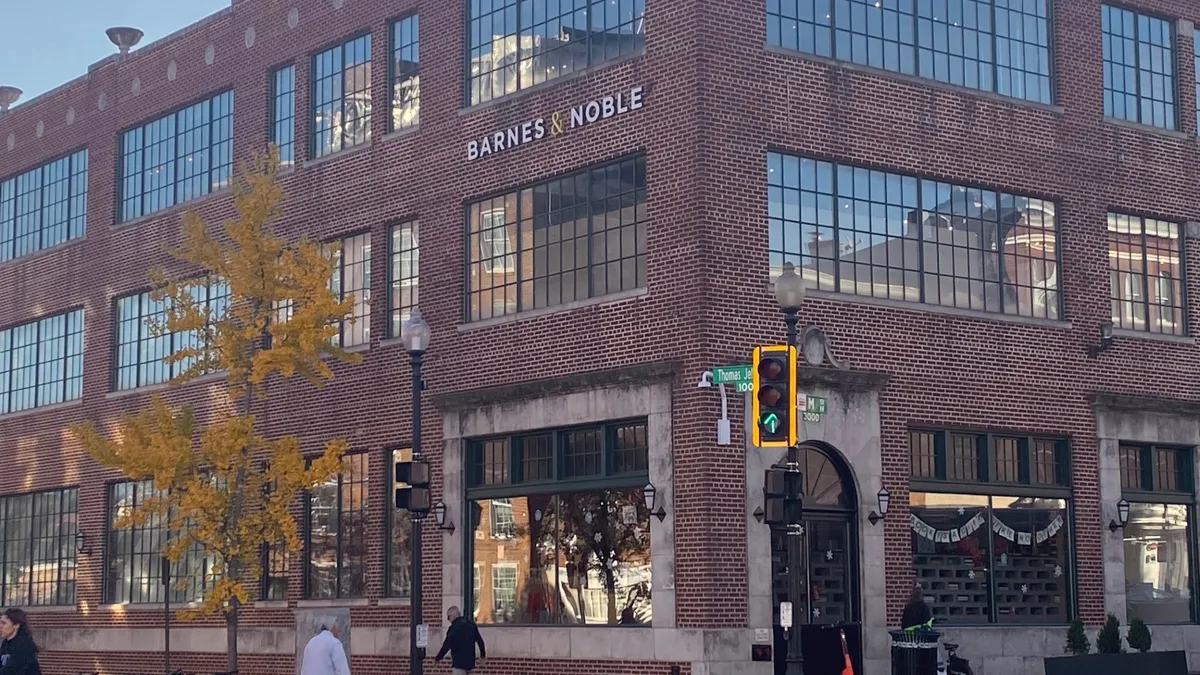Apple CEO Tim Cook finally revealed the details on the new Apple Watch in its much-hyped “Spring Forward” last week, calling it the company’s “most personal” product to date. And if Apple’s track record is any indication, it has the potential to be the killer device that makes smartwatches a fixture on the marketplace.
Like the iPod, iPhone and iPad before it, the Apple Watch may not be the first of its kind on the market, but it may be the one that defines the market, enthusiastic onlookers say.
“Apple has once again created a new category,” Christian Gaiser, the founder and CEO of Retale, a shopping app set to run on the new watch, told Retail Dive. “No one is as good as Apple at defining the user experience.”
A boost for the mobile wallet
Which many functions that will resonate with consumers will become clearer when the Apple Watch ships April 24. The watch will be able to receive calls, take dictation via Siri, monitor heart rate and track exercise activity, map directions, and more. But its most immediate potential for retailers is to increase use of the Apple Pay mobile wallet system.
Mobile wallets have so far been slow to catch on. Some 64% of Americans still say they would “never” or “hardly ever” use a smartphone to make a purchase, according to a new survey from CreditCards.com. “Consumers are already very comfortable swiping their credit and debit cards,” Matt Schulz, the site’s senior industry analyst, said in a release. “Most people don’t see why a mobile payments service would be quicker, easier or more secure.”
The Apple Watch could, in fact, change all that. While one must also own an iPhone to use Apple Pay on the smartwatch, the phone doesn’t need to be present during a proximity payment, and the Apple Watch eliminates steps in the process.
“From a security standpoint, the watch has a bigger benefit, because it’s easier to keep,” Gaiser adds. “This definitely has the potential to replace the wallet.”
Apple’s near-field communication (NFC) system is already accepted at 700,000 merchant locations and supported by more than 2,500 banks. And by opening Apple Pay access to iPhone 5 users by including its own NFC chip, the Apple Watch has the potential to triple consumer adoption, Jon Squire, Cardfree CEO, told PYMNTS.com.
“Apple Pay is already the platform to be beat in the space,” he said. “The addition of Apple Watch is going to propel both growth and the distance to which Apple pulls out in front. They have proven again the beauty of a closed ecosystem, married tightly to the Apple brand halo, means you don’t have to be first, just better.”
Pushing sales at brick-and-mortar
Other apps available at launch will include offerings from American Airlines, Fandango, Uber, and others concentrating on delivering information to the smallest smartscreen on the market. Retailers, however, will be able to take advantage of the Apple Watch’s geopositioning technology to send information and offers to nearby shoppers.
Target’s app, for example, will sort users’ shopping lists to streamline the in-store experience, while Retale’s app will alert them of offers from favorite retailers nearby.
“The Apple Watch presents an opportunity to reconnect consumers and traditional brick-and-mortar stores,” Gaiser says. “I think it will be a big driver for offline sales. Getting an alert on your watch will be easier and faster than consuming it on your phone.”
The company aggregates information from the circulars of more than 500 U.S. retailers including Target, Best Buy, and Macy’s. Retale’s more than 15 million users worldwide set up alerts based on their personal preferences, and the company takes a small customer engagement fee based on response.
“Most people use it in preparing for a shopping trip,” Gaiser says. “It is the most attractive point in time to reach the consumer, because they haven’t made up their minds yet where they want to go, or which product they want to buy. It is the point in time you want to be at to influence their shopping decisions.”
Gaiser expects the Apple Watch to eventually represent 50% to 60% of total market share in smartwatches, with smartwatch penetration eventually reaching a level similar to tablet computers. Additional proximity uses such as iBeacon connectivity and so-called Internet of Things functions—like Tim Cook’s promise that the Apple Watch will replace your car keys—will also help drive adoption.
“It opens up additional use cases, especially for retail,” Gaiser says. “If you think of the experience inside a mall or in a city center, you can reach smartwatch users with a very intuitive and very easy form of communication. It will drive offline sales just because the watch is inherently something you wear when you walk around and do something—as opposed to something that sits on your desktop.”



















